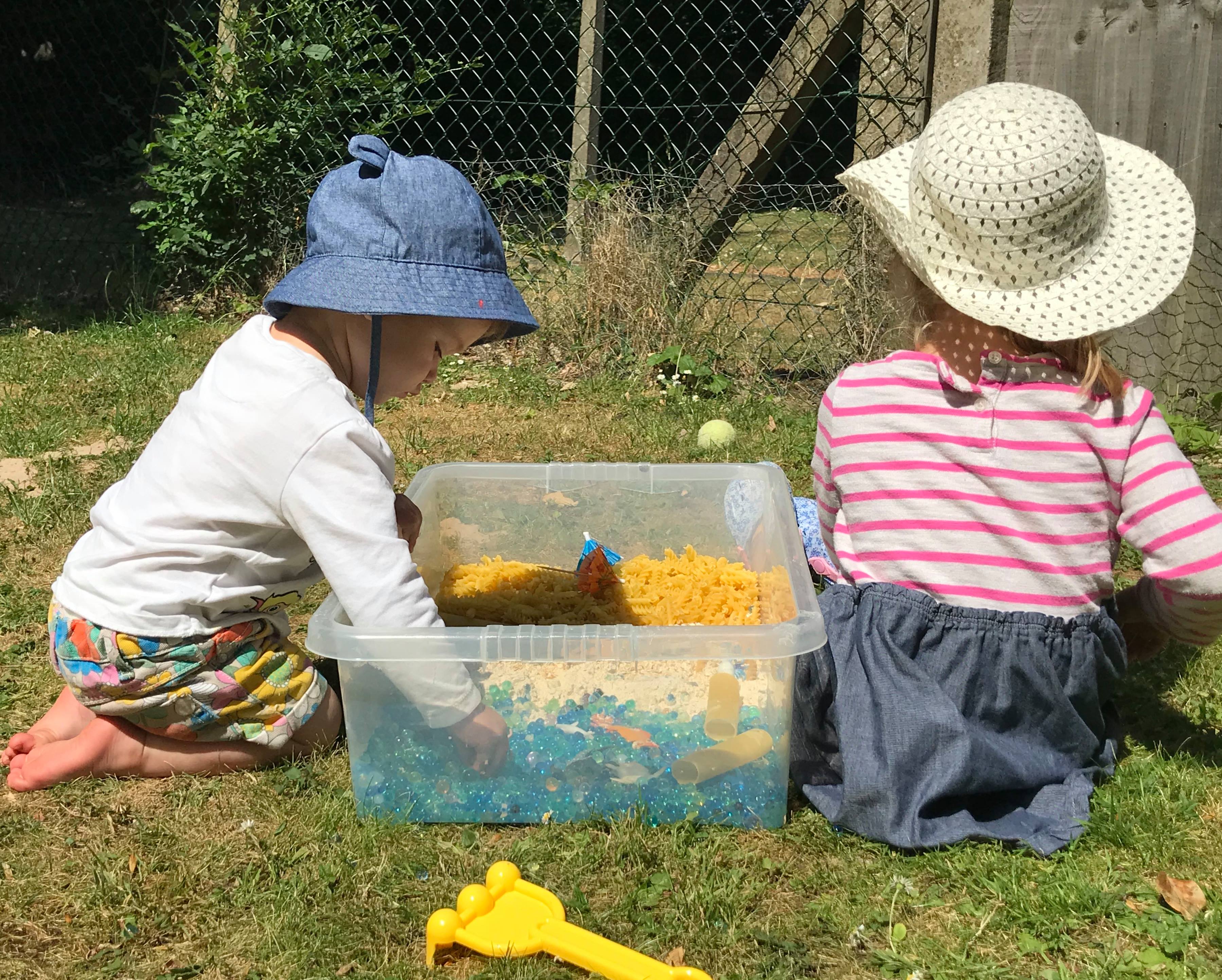Four steps to creating a sensory bin:
- Find a container. They should be shallow. It could be anything like a large plastic food container, under bed plastic box storage or even a water/ sand table on legs. It doesn’t have to be transparent either, though we like it when it is as it adds another visual element to the play.
- Theme. Does your Sensory Bin have a theme? It is useful having a theme as it will help you put together your bin in a more unified fashion. Is it based on something as simple as color? Or is there a subject like the jungle or gardens?
- Choose a filling. Firstly you need to consider how old the children who you are creating it for are. The filling needs to be age appropriate. For example, using water beads is not advisable for children who still regularly put things in their mouths. Instead, using cooked pasta, oats, rice, cream or jelly would be better. For older children, water beads is an excellent choice, shaving foam, shaved soap, beads, sand and so on is great.
- Pick your Utensils. Think like a child when you collect your utensils. What makes visually stimulating scenes, what is good to scoop and dig with? Think funnels, measuring cups, colanders, spoons, tongs/tweezers, ladles, and spades.
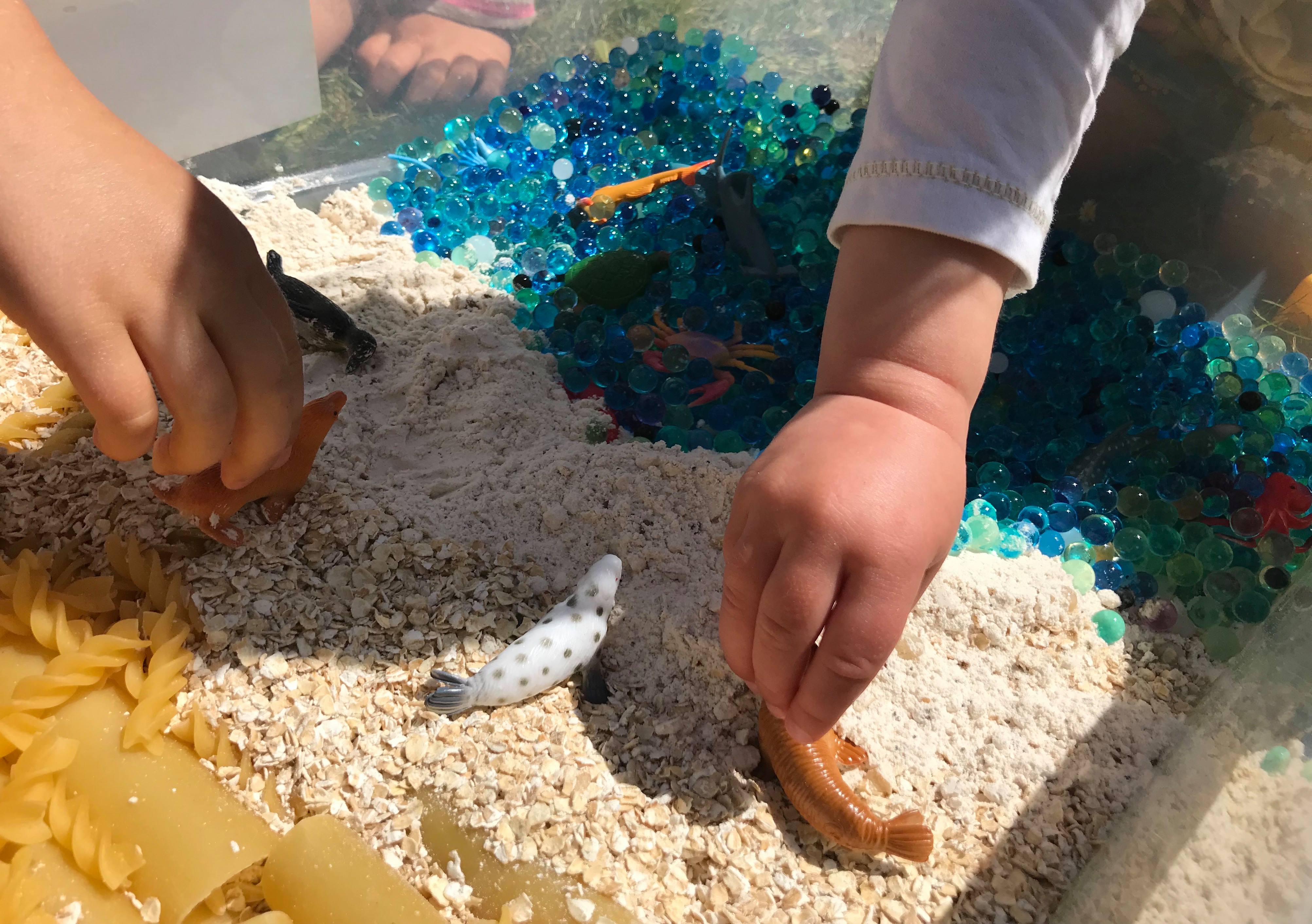
Children learn by creating, whether that is in art practice or otherwise. The process of exploring, experimenting and creating is more important to them than the finished product. It is the very ‘process’ that creates the learning. This is why ‘sensory play’ is so important for preschoolers. It encourages exploration of their senses. That is, sight, touch, taste, smell, hearing, as well as movement and balance too. The options for sensory play are truly limitless. In fact in these situations, often the people who hold back our children are us, the adults! What we mean by that is, often, we lack the imagination for creating sensory opportunities.
More then meets the eye
Sensory play is not just play. It is actually scientific. Really? How? A child will observe, hypothesize, experiment and conclude throughout their play. What they accomplish through this play they will retain.
Let us give an example: Child A who does not like swimming or having baths is nervous around water, not feeling in control of their body and feeling unstable. If given a sensory activity that involves water play in a shallow paddling pool or water table, with balls, boats, funnels, and cups, they can experiment. They will begin to process that actually water doesn’t have to be scary. Introducing this play away from any pressure or expectation creates new neural roads to their brain. They have accomplished playing in water and have retained that water doesn’t have to be scary, it can be fun too. They have been pushed out of their comfort zone in a safe way and adapted.
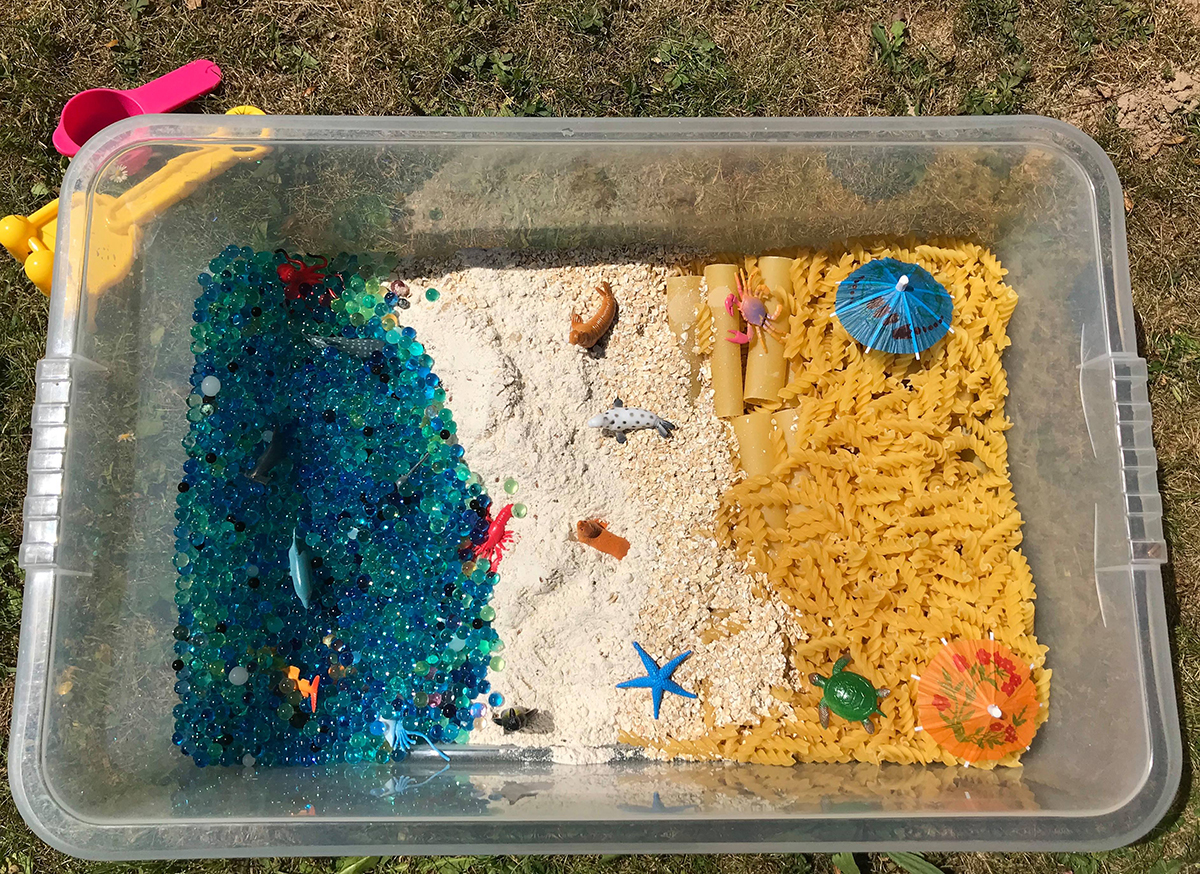
Fact:
Creating sensory play that requires your child to use more than one sense to complete a task helps them learn and shows them how to tackle more difficult tasks and how to think outside of the ‘bin’ as it were.
This does not stop the older you get, the premise remains the same. In fact, studies have shown that by challenging yourself and your senses and creating these new ‘roads’ to your brain can help keep Alzheimer’s at bay. So get involved too!
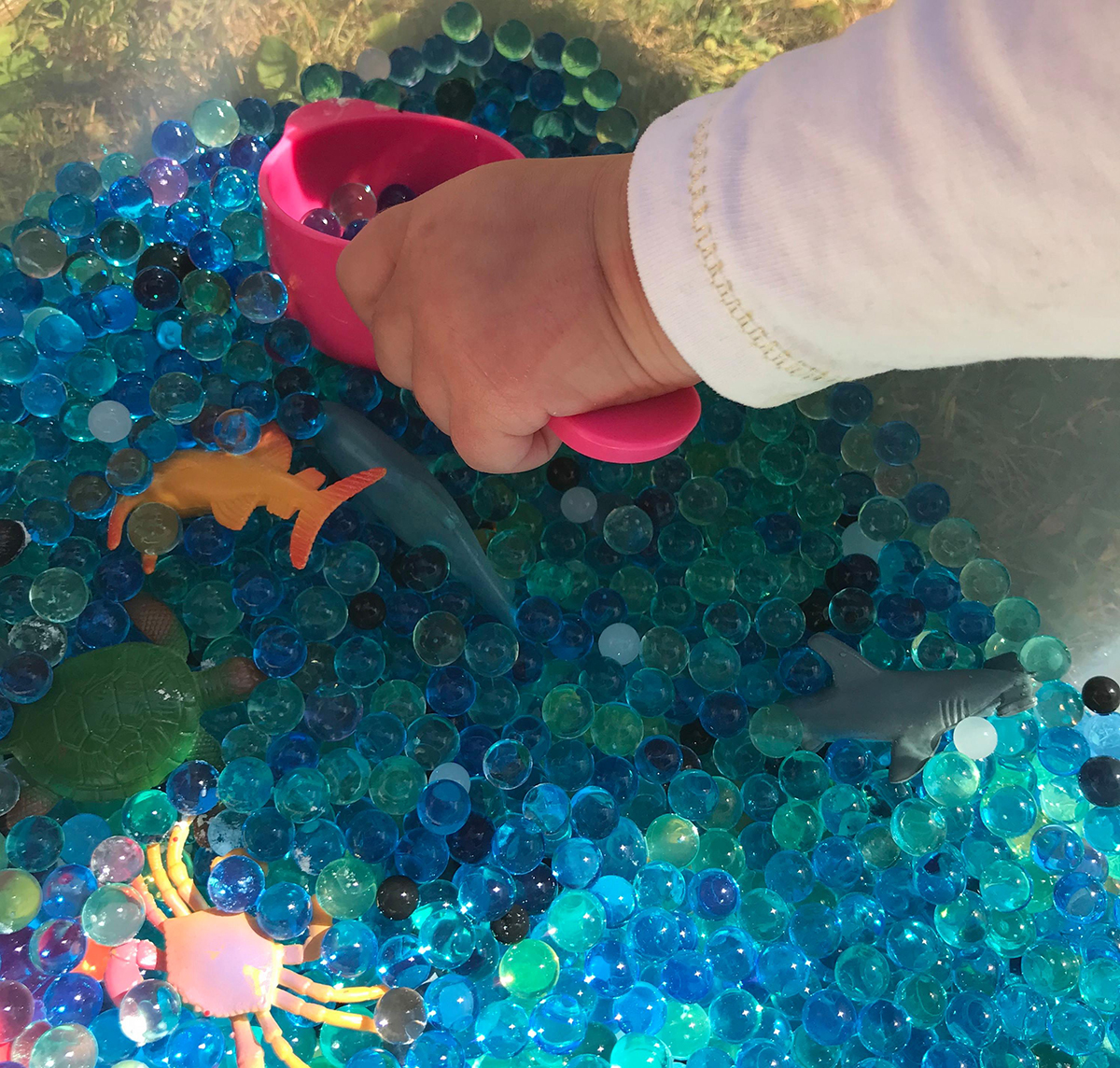
How to create a Sensory Beach Bin
What you will need:
- Any shallow plastic container/water and or sand play table. It doesn’t have to be transparent but we find that it adds another visual element to the play.
- Two – three of the following foods: pasta, rice, couscous, oats, cereal like Rice Crispies, quinoa, flour
- Water beads, blue if you can
- Plastic sea and beach animals
- A jug with water in it
- A bowl
- Utensils – scoops, spoons, funnels, tweezers, little rakes etc.
- Cocktail umbrella (optional)
- Lego people (optional)
SAFETY NOTE: Water beads can be choking hazards for children and animals. The advice on bottles of water beads states 3 years+. If you do let younger children use them in sensory play, do not leave them alone with them.
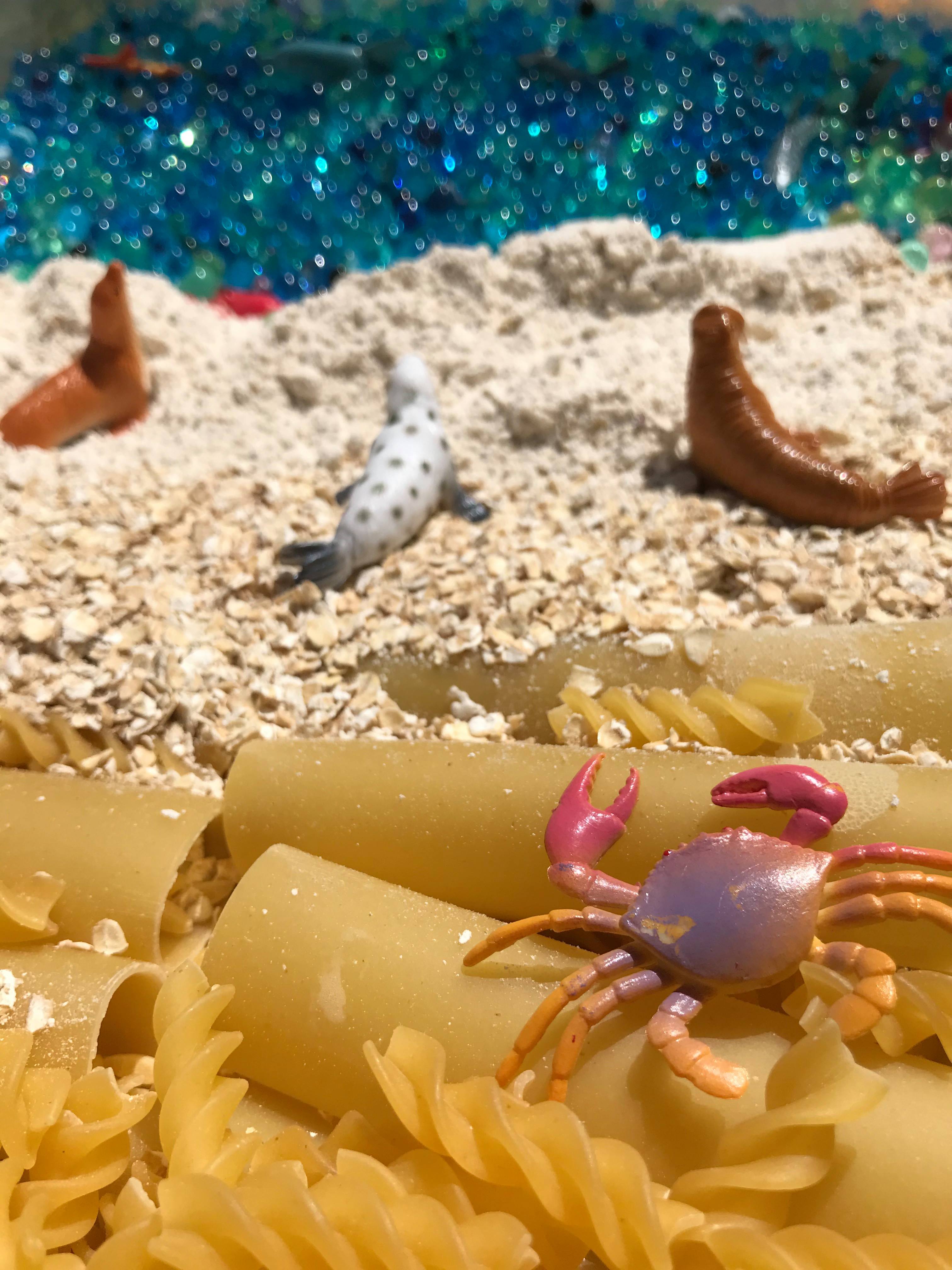
Instructions:
- 6-8 hours before you want to do this activity with your children, follow the instructions on your water bead packet. You will need to soak them in water so that they expand. When they are ready, move on to step two. This can be done the night before.
- Place your container where you want the children to play with it. TIP: toddlers and preschoolers will concentrate better if they are either standing or kneeling. If they are sitting, make sure their feet touch the ground.
- Make a decision about where you will have the ‘beach’ area and the sea area. See what marine toy animals you have, that may inform the beach to sea ratio. If you have more sea animals, the sea should be bigger and so on.
- Before you start creating your ‘beach’ with the food you have gathered think about the biology of a beach. Furthest away from the sea tends to be rocks, gravel and the closer you get to the sea, the finer the sand becomes. With that in mind, put the pasta furthermost away, then the cereal, oats, rice, couscous, and end with the finest grain, like flour closest to the sea area.
- Once the beach is complete, add the water beads to the allocated sea area.
- Place the plastic sea animals in the relevant places and any other pieces you would like to include.
- Put the utensils beside the container, including a jug of water for them to use how they wish.
- Now release the children!
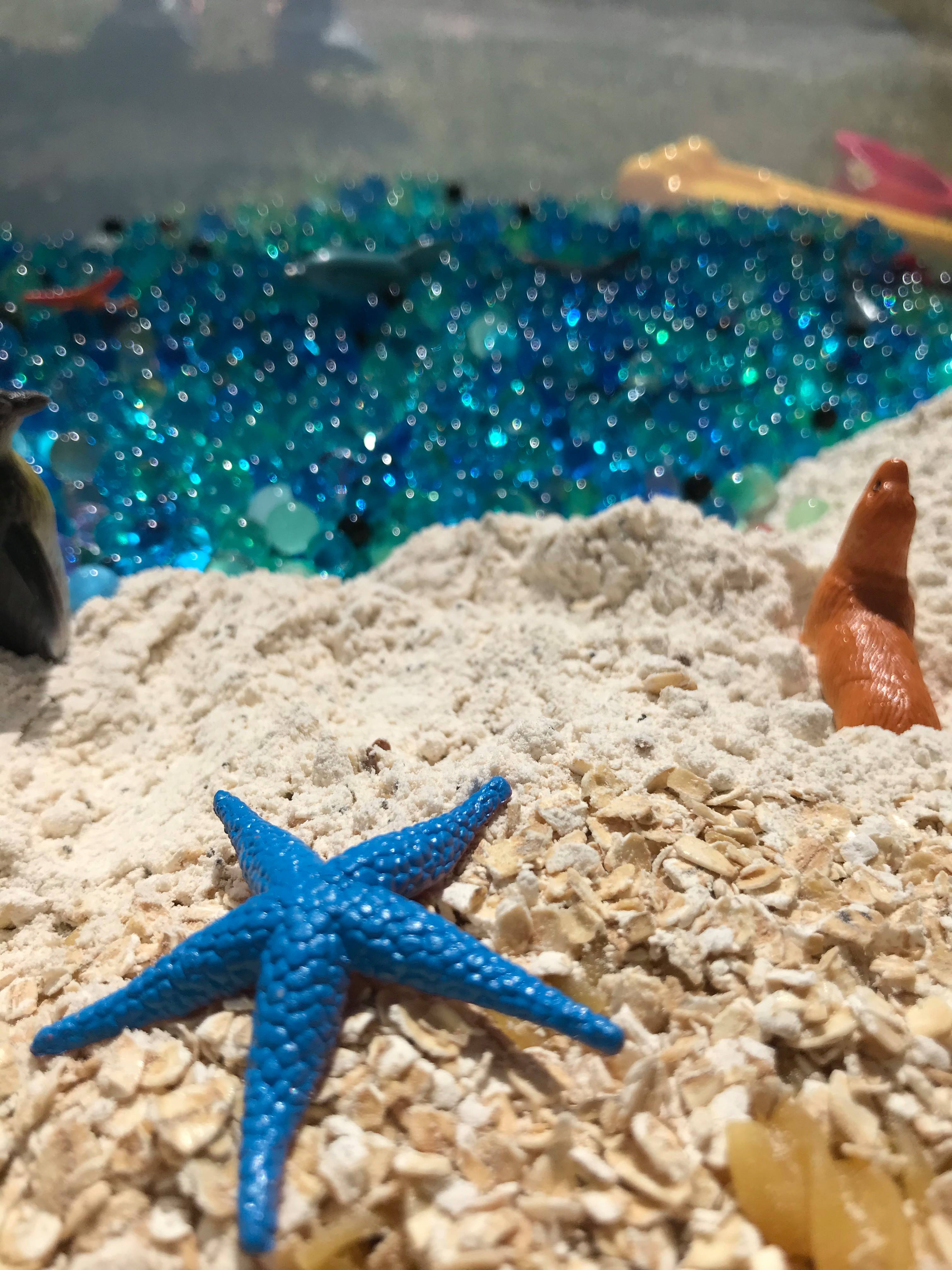
Don’t forget to follow us on Twitter, Instagram, Pinterest, and Facebook!
 Contributor
Contributor
Grace Selous Bull is an arts education author and freelance blogger. Her book, ‘Potty About Pots: arts and crafts for home and school’ is aimed at children from 5-12 years old and takes them through a journey of ceramics through time. She is a full time Mummy of two girls, both of whom love being creative, and is married to her husband, Andrew, who does not.
Original content © 2018 Super Simple. Not to be reprinted without express written permission. Terms of Service.

